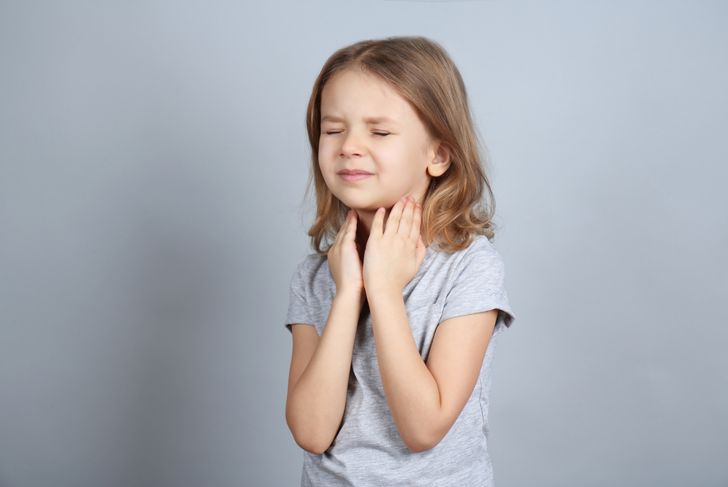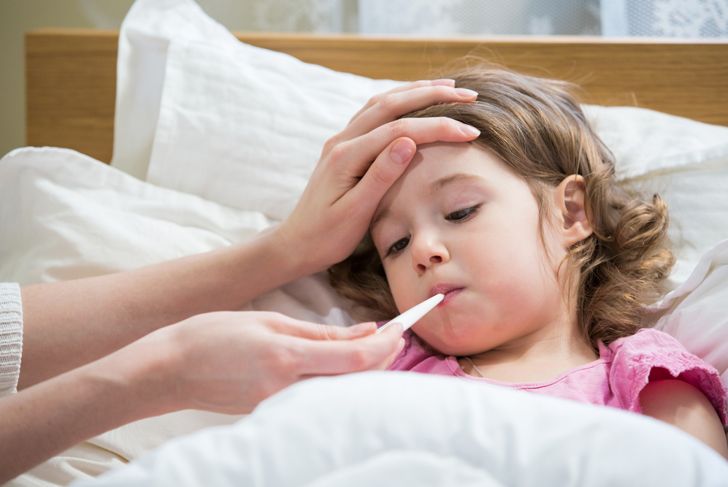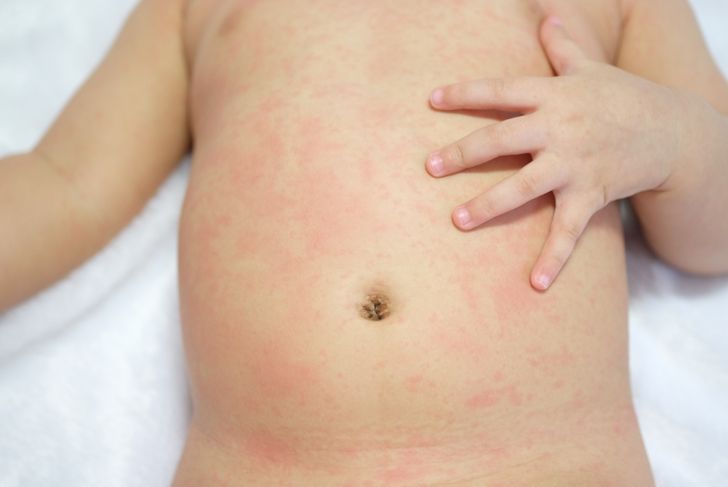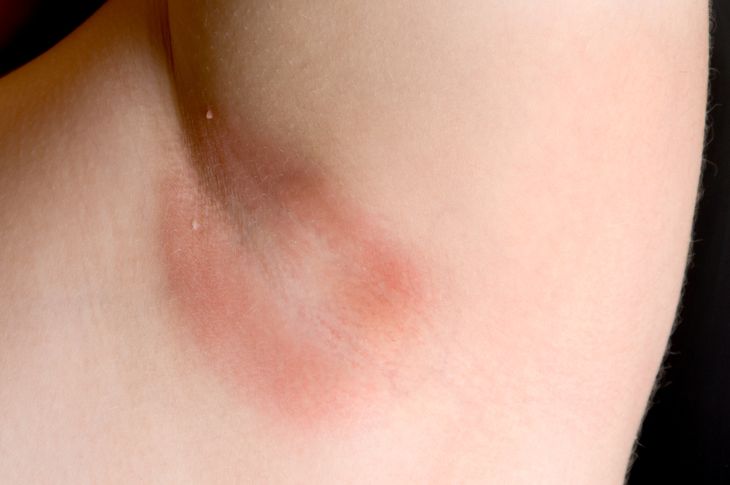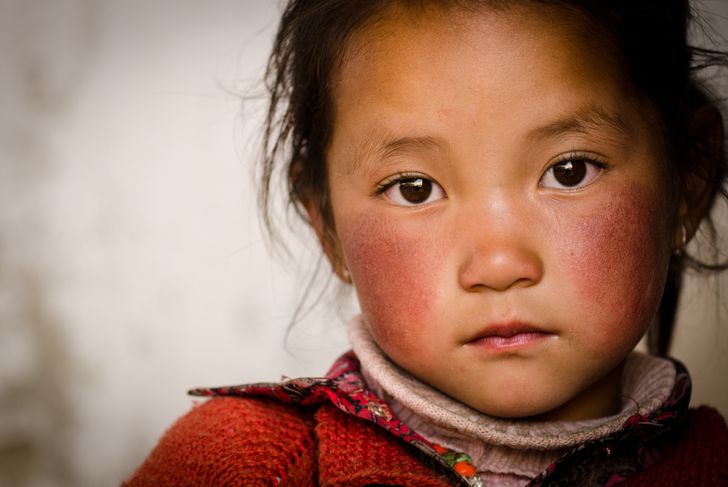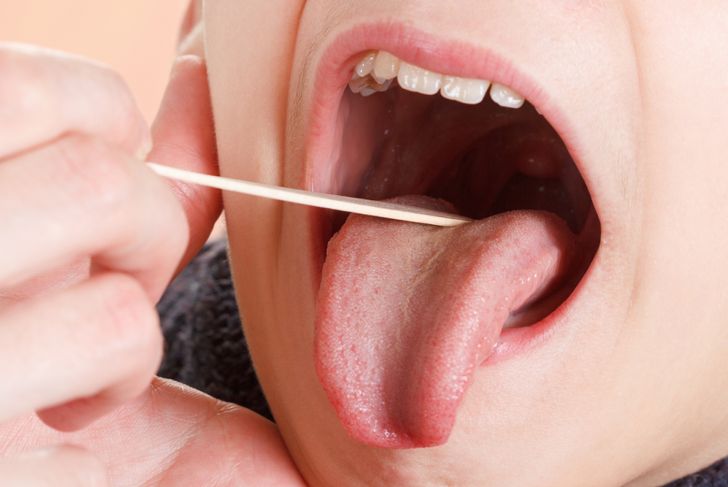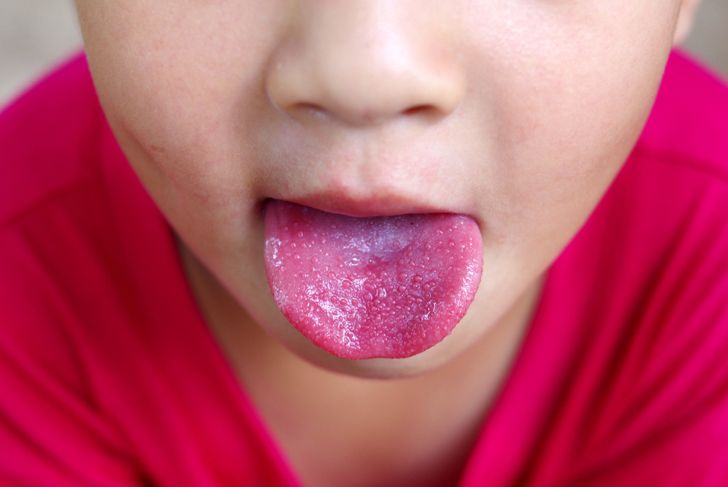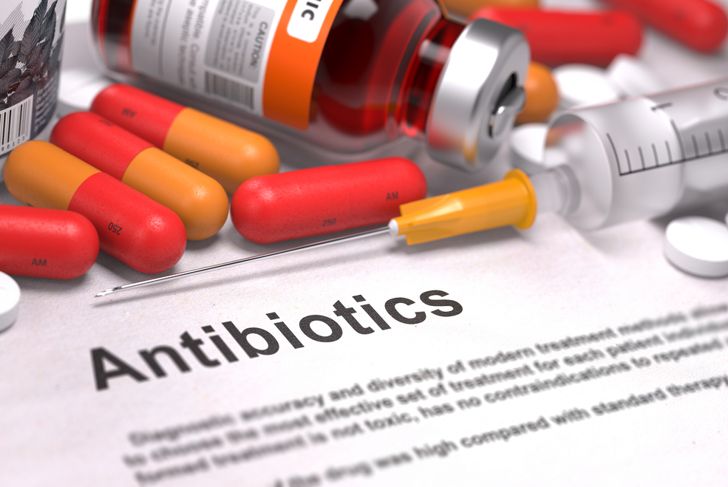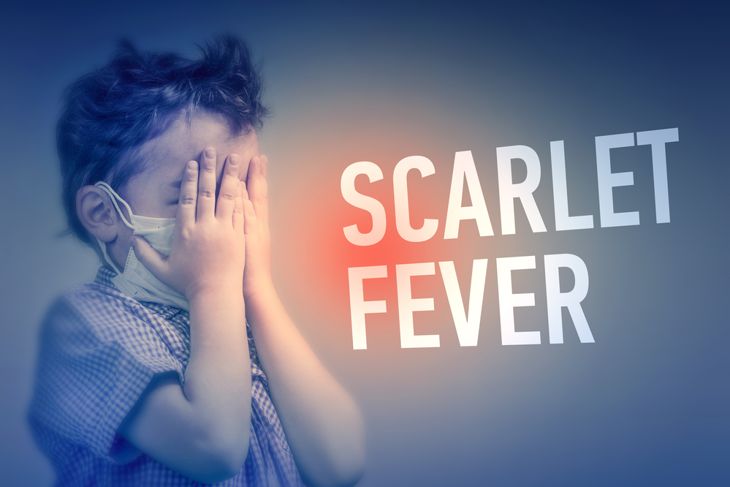Scarlet fever, also known as scarlatina, is an infection that can develop in people who have been infected by group A Streptococcus—or strep throat. The infection most commonly affects children 5-15 years of age, although it can affect both children and adults alike. Scarlet fever is marked by a blotchy red rash all over the body as well as fever and a sore throat. If treated early, the prognosis for scarlet fever is very good. The same antibiotics that are used to treat strep throat can clear up scarlet fever in a matter of days.
A sore throat
Since scarlet fever is caused by the same bacteria that causes strep throat, a person with scarlet fever will have a painful, sore throat. The throat sometimes has visible white patches or streaks of pus, and it may be difficult for the person to swallow. A sore throat from Streptococcus usually comes on very quickly. It is a very contagious bacterium and can travel through droplets from coughing, sneezing, or from a person’s saliva on a utensil. The contagious period starts 12 hours after exposure to the bacteria until 12 hours after a person’s fever has gone down.
Fever
A fever of 101 F (38.3 C) or higher is one of the signs of an infection raging in the body. Chills and sweating often accompany the fever. In young children, it is important to keep the fever down for fear that a very high fever can cause convulsions. Give your child a fever-reducing medication, a lukewarm bath, and very cold water to drink to help reduce the fever. Monitor your child’s temperature, and contact your provider if the fever is not coming down.
Blotchy pink-red rash
The telltale sign of scarlet fever is a blotchy pink-red rash that usually starts on the stomach before spreading to other areas of the body. The blotches may be spread apart or join up together, and the skin feels rough, like sandpaper.
Red lines or streaks
In addition to the blotchy rash, you may find that creases in the skin and body folds appear redder than other places. The armpits, elbows, and knees may develop red lines or streaks.
Red face
A person with scarlet fever may appear flushed or red in the face. The redness on the face is different from the blotchy rash on the rest of the body. The cheeks turn very red, and it may appear similar to sunburn. The area around the lips are not usually affected, and may even become pale.
Swollen tonsils
Swollen tonsils, or tonsillitis, is a sign of infection. The tonsils are part of the lymphatic system, and when they become infected with a bacterium such as Streptococcal, they swell. This is a common symptom of strep throat and can be seen with scarlet fever as well.
Strawberry tongue
Scarlet fever is sometimes accompanied by a red or white tongue. The tongue will develop a white coating which peels away, leaving the tongue and taste buds red and swollen, and “strawberry-like.” The tongue may look white; white with red dots, or red and swollen with enlarged taste buds.
Nausea and vomiting
In addition to the telltale symptoms of scarlet fever, you may develop non-specific symptoms of illness including feeling sick (nausea) and vomiting. This may be due to a high fever, which should be brought down with fever-reducing medication. If you are feeling nauseated and you are vomiting, drink plenty of fluids to stay hydrated. Stick to the BRAT diet (bananas, rice, applesauce, toast, and crackers), and avoid acidic foods and dairy products.
Treatment
The treatment for scarlet fever is the same as treatment for strep throat. Your doctor will prescribe an oral antibiotic in tablet form for adults, or in liquid form for children. The course of this antibiotic is typically ten days. Make sure to take the whole course of antibiotics even if you begin to feel better after only a few days. You may take an over-the-counter fever-reducing medication like ibuprofen or paracetamol to bring the fever down during the first few days of treatment until the infection is gone.
Other information about scarlet fever
You should begin to feel better after only 1 or 2 days of antibiotics. The rash may take up to a week to disappear. And the skin may continue to peel for a few days following the beginning of treatment. After a full 24 hours on antibiotics, you are no longer contagious. Rarely, the infection may spread to other parts of the body causing issues such as ear infection or lung infection (pneumonia). If your child has scarlet fever, keep her away from public areas and school until she has been on antibiotics for 24 hours. Immediately throw away used tissues, and wash hands frequently to avoid spreading the infection. Do not share utensils with anyone who has scarlet fever. For any other questions or concerns, contact your provider.

 Home
Home Health
Health Diet & Nutrition
Diet & Nutrition Living Well
Living Well More
More